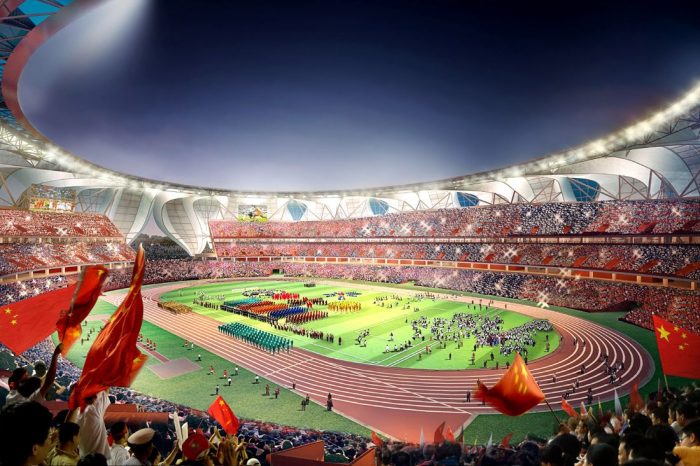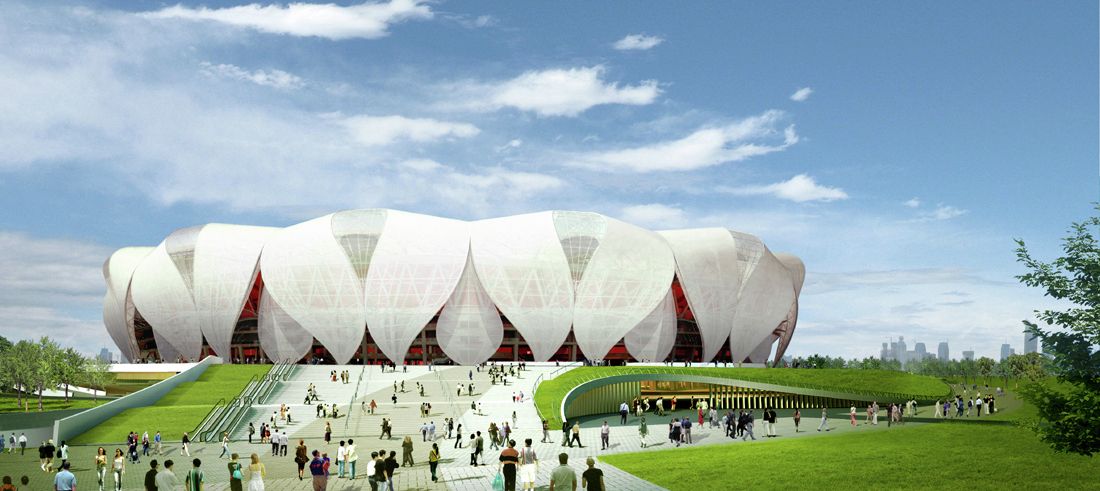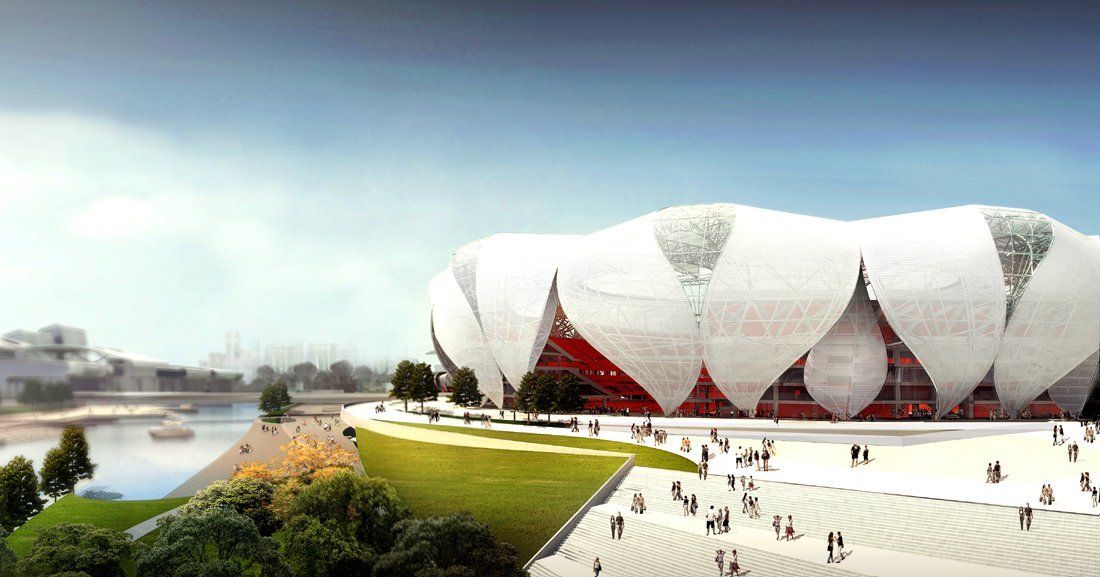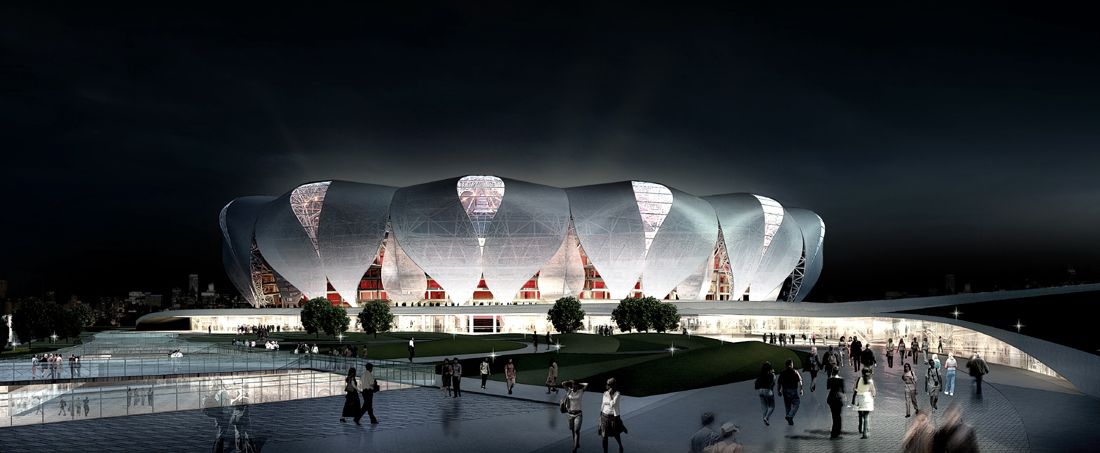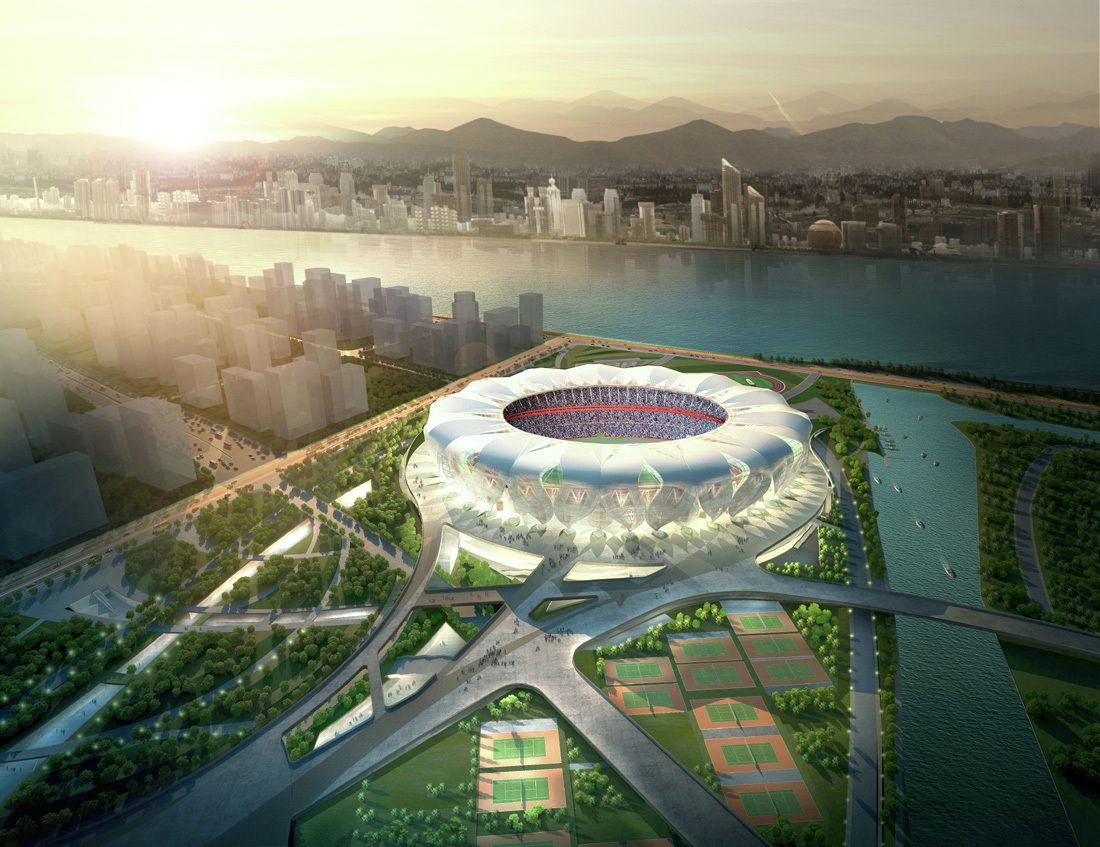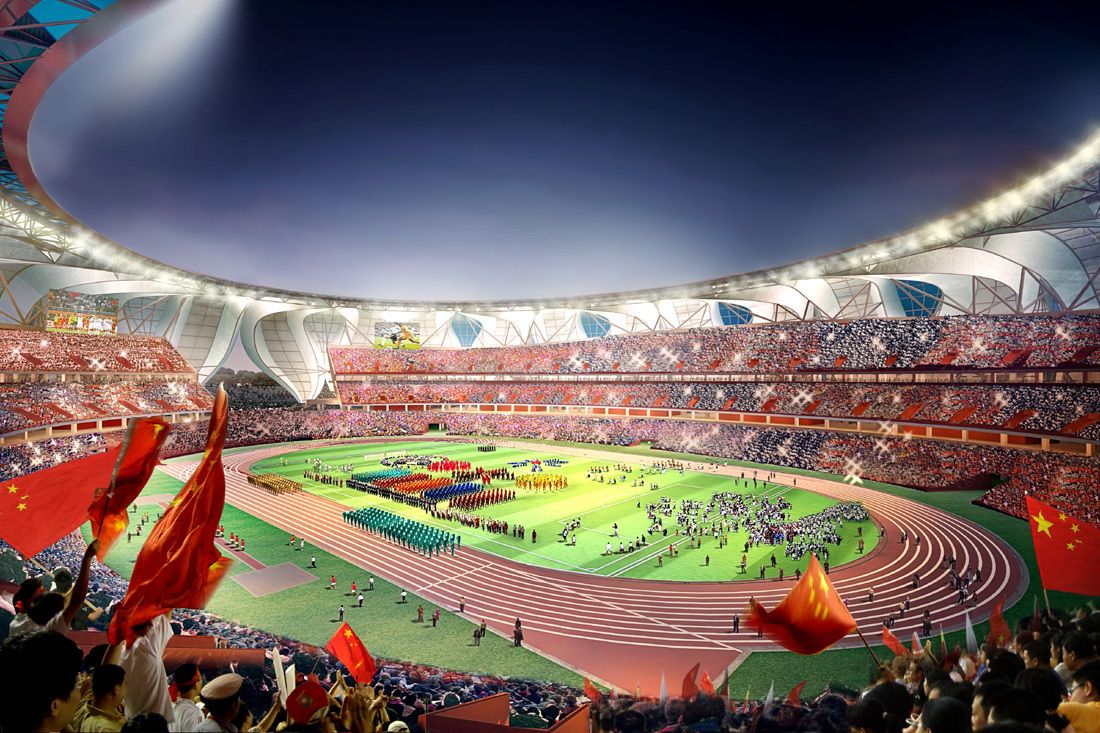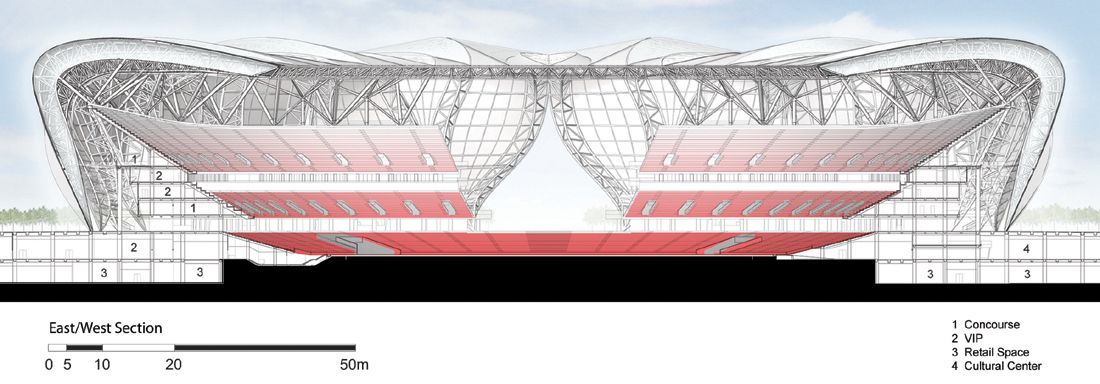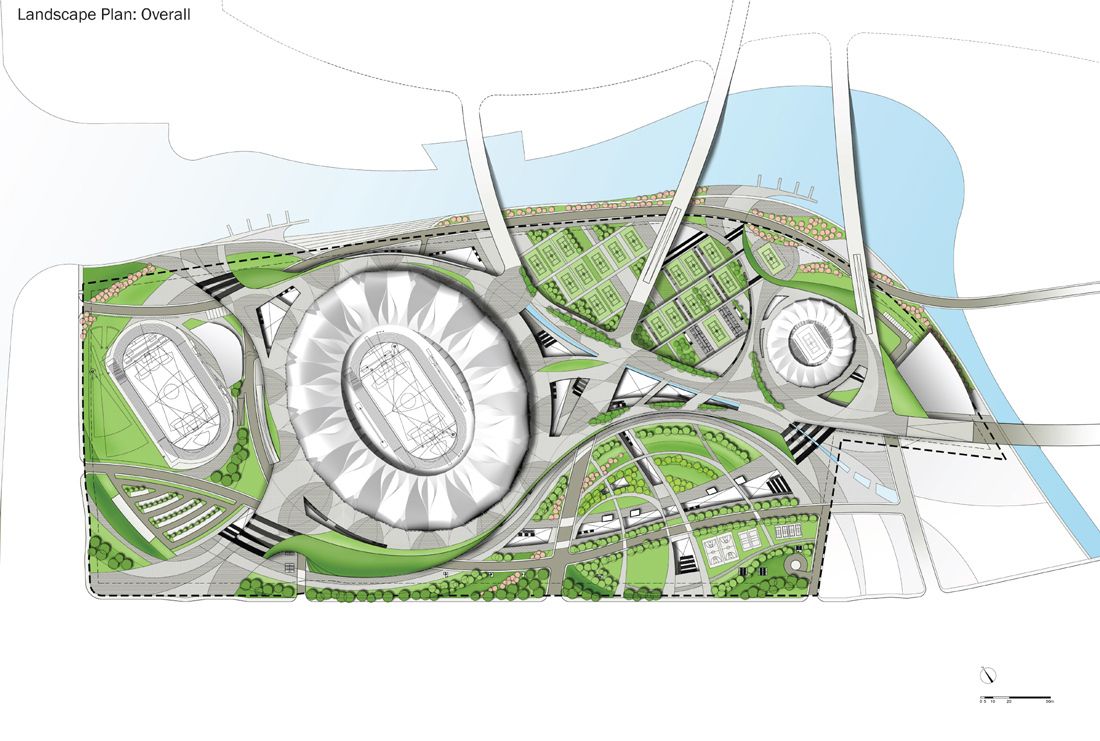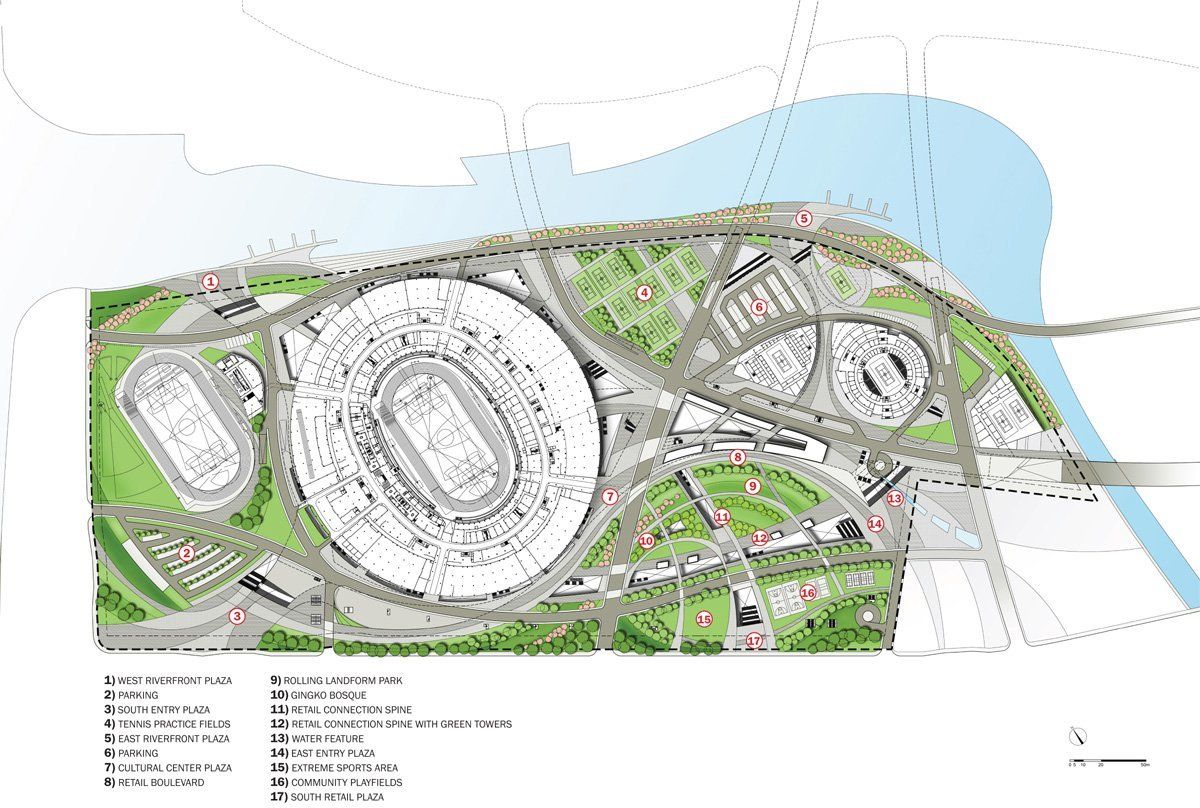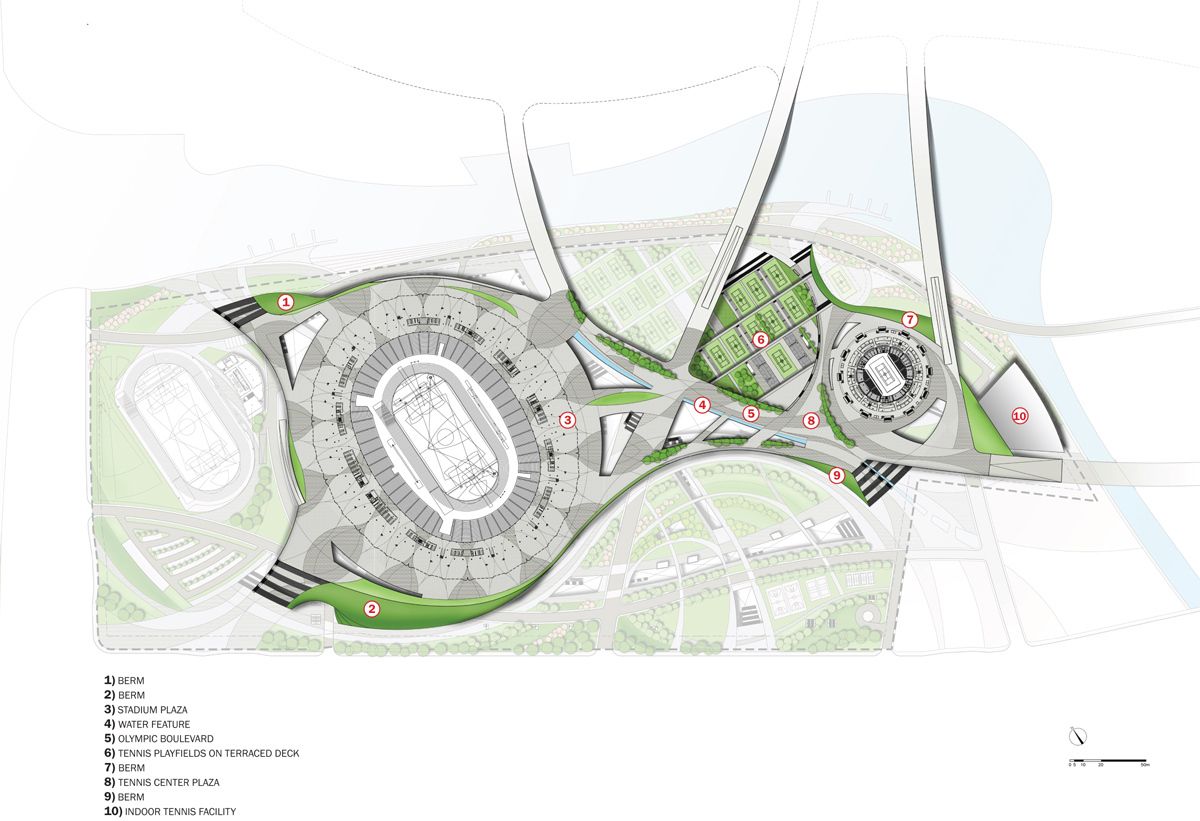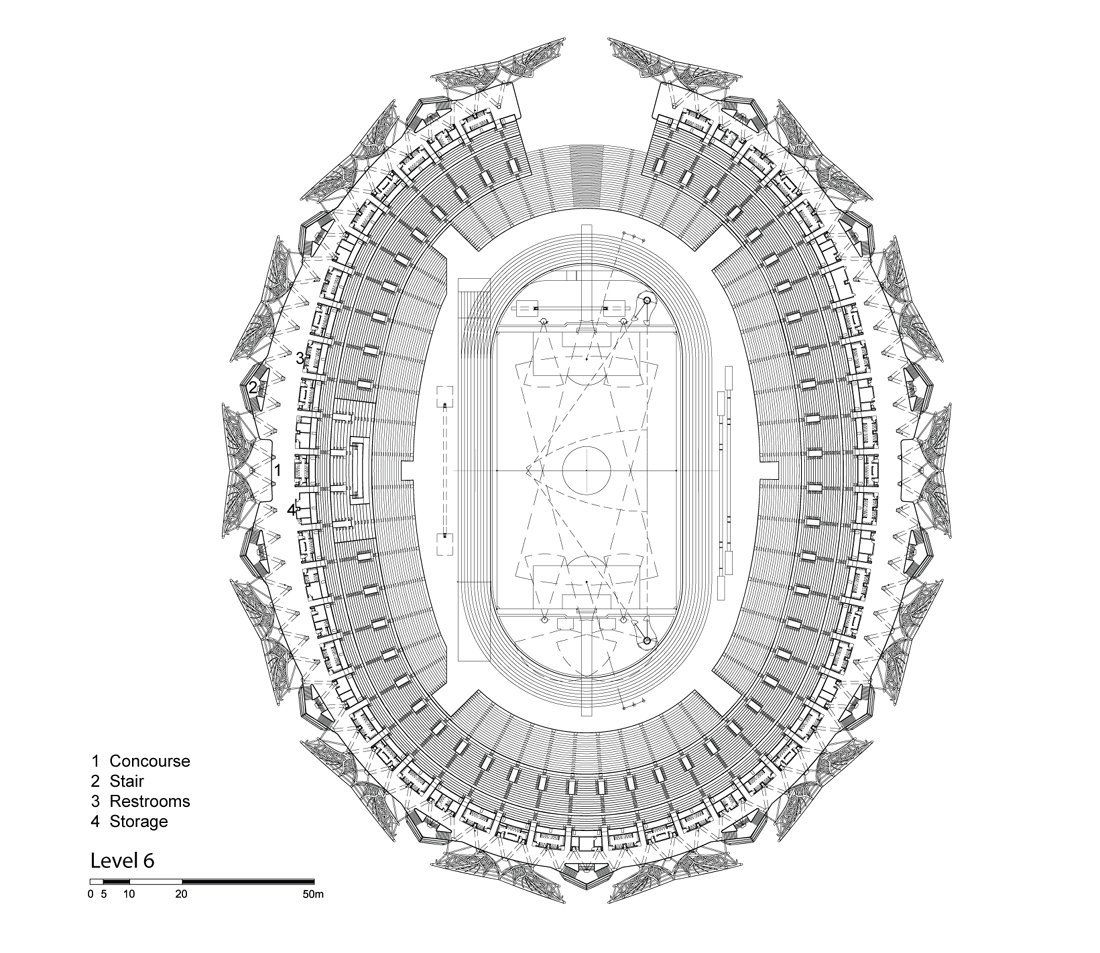“The issue is not about how to sustain a large stadium commercially between games, but is about how a massive stadium can lead a 2 million-square-meter mixed use commercial program in a green park setting, form a future urban center, and redefine a new lifestyle. Our design provides what is exactly needed to support that agenda.” Hu Xiaoming, design director of CCDI’s Sports Division.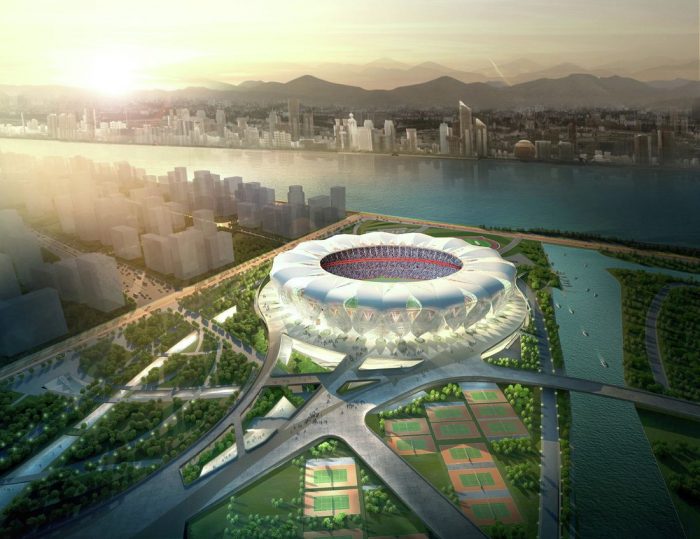
The Hangzhou Sports Park is a design collaboration between NBBJ and CCDI for Hangzhou’s new urban environment and is situated on the Qian Tang riverfront opposite the new Central Business District. Balancing the long-term commercial viability of the sports development, the park creates picturesque and sustainable public spaces that redefine sustainable design excellence in sports facilities while also retaining the importance of circulation.
A weaving pedestrian experience is created through the flowing forms of the landscape and pathways that echo the geometries of the nearby river delta. The site is organized to clearly define circulation and areas of concentrated activities, tying together the sports and commercial programs. The paths also connect the two planned major transportation hubs on the east and west ends of the site, allowing not only easy movement in and around the park but in and out of it as well.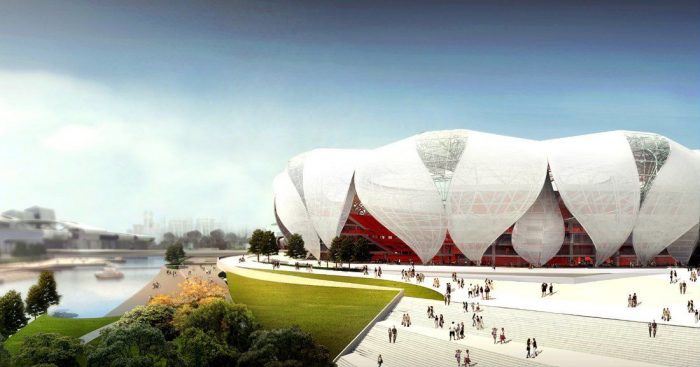
The park is composed of three layers of activity. The above-grade areas are defined by a platform that indicates the higher concentrated areas of activity deemed the ‘sports boulevard’ that consists of the main stadium and tennis tournament facilities. The ground level is designated for public recreation activities such as alternative and extreme sports and was designed using a vast array of pathways, gardens, and plazas to accommodate the public’s needs. Finally sunken spaces and courtyards lead to an extensive below-grade retail facility containing boutique stores, restaurants, and a multiplex cinema.
The most dominant feature of the park, a 80,000-seat Main Stadium, broke ground in December of 2009 and is slated for completion in 2013 as an premier international sports venue. According to the designers, the stadium’s exterior shell geometry draws from the serene flora iconography found on the banks of Hangzhou’s West Lake in order to create a powerful and unique image along the fast growing Qian Tang riverfront. On the north end of the stadium, the seating bowl opens to reveal a view to the Yangtze riverfront, providing a connection between the stadium and the new Central Business District to exist. The circulation experience was carried through the stadium by means of the bowl program and structure that coordinated with the exterior shell to create a unique concourse.